Birth
January 8th, 1638 in Metropolitan City of Bologna, Italy
Death
August 28th, 1665 in Metropolitan City of Bologna, Italy
Born in 1638, Elisabetta Sirani [fig. 1] lived a tragically short life, which ended suddenly from a suspected poisoning at age twenty-seven. In this time, she produced over 200 paintings, fifteen prints, and numerous sketches, the most important of which are recorded in an autobiographical diary entry included in Carlo Cesare Malvasia’s Felsina Pittrice (1678). She was taught by her father, Giovanni Andrea, a pupil and assistant of perhaps the most famous and successful Bolognese painter of the Renaissance, Guido Reni. When her father became ill, she took over the family workshop, using her art to support the family. Sirani quickly gained a following amongst Bologna’s emerging mercantile elite, primarily for her history paintings depicting ancient heroines in moments of fortitude, honor, and courage. These were interspersed with copious religious works, ensuring continued commissions from Catholic clients after the Counter-Reformation. Today, she is increasingly the subject of influential art historical scholarship, and she is beginning to capture the hearts of the general public in exhibitions across the globe.
Personal Information
Name(s)
Elisabetta Sirani
Date and place of birth
January 8, 1638 in Bologna, Italy
Death and place of death
August 28, 1665 in Bologna, Italy
Family
Mother: Margherita Masini della Mano (dates unknown)
Father: Giovanni Andrea Sirani (1610-1670)
Marriage and Family Life
Elisabetta lived, worked, and died in a two-story townhouse situated along the Via Urbana in the province of San Momolo, Bologna. She was the first of five children born to the artist Giovanni Andrea Sirani, assistant and close friend to the incredibly successful Bolognese master Guido Reni (1575-1642). Of her three sisters, only Barbara (1641-1692) and Anna Maria (1653/4-1715) lived into adulthood; a younger sister named Angela (b. 1645) likely died before her second birthday. Her only brother was named Antonio Maria (b. 1649). The demands of running the family studio meant that marriage was not on the cards. This seems to have been an active choice, for instead of being referred to as a ‘virgo’ (virgin/maiden) in contemporary documentation, she was instead cited as ‘citella’ or ‘zitella’, meaning ‘lifelong singlewoman’. Presumably marriage would only have increased the immense pressure on the young artist’s shoulders, leaching vital time from the artistic pursuits which supported her family.
Education (Short Version)
Elisabetta was educated in music (specifically the harp), poetry, painting, art theory, printmaking, classics, and philosophy.
Education (Long Version)
Elisabetta was known in her day as “Saggia Donzella” [wise damsel] and “la dota” [the learned] Elisabetta Sirani. She was educated in classics and philosophy by the university professor Dottor Alloisi Magni, who also taught her brother. She was an impressive poet and musician (specifically a harpist), paying for her own lessons in the latter. Her father, of course, taught her painting, art theory, and printmaking.
Religion
Elisabetta was a Catholic who grew up during the Counter-Reformation. Her first major public commission was the immense Baptism of Christ (1648) [fig. 2] for Bologna’s Chiesa di San Girolamo della Certosa, which she completed by age nineteen. She was particularly well-known for her intimate, motherly Madonnas [fig. 3].
Transformation(s)
Sirani and her three surviving siblings, along with both parents and two unmarried aunts (Giacoma Sirani and Isotta Masini) were reliant on the income of the Sirani workshop and several properties let out by Elisabetta’s father. When Giovanni Andrea Sirani developed arthritis and gout, rendering him unable to paint, it was the prodigious Elisabetta who took over the family business, becoming the sole breadwinner. Alongside teaching her sisters the art of painting, she financially supported her brother through his doctorate in Medicine and Philosophy at the University of Bologna, from which he graduated in 1670. As the workshop grew, Elisabetta also had to support the food, board, and guild dues of at least twenty artistic assistants. This immense pressure must have contributed to the staggering 200+ paintings and fifteen prints she managed to complete in just over a decade of practice.
Though she was taught by her father, Sirani remained determined to make her own name. According to her biographer and close friend Carlo Cesare Malvasia, “Cercava ella tuttavia di staccarsi dal fare del padre e poneva piu' foza nelle figure per non conformarsi alla maniera del padre, come fece la Lavinia [Fontana] a quello di Prospero” [“She tried, however, to detach herself from the ways of her father, putting more effort into her figures so as not to conform to his manner, as Lavinia [Fontana] did to that of Prospero”] (Malvasia, Felsina Pittrice II, pp.401). Malvasia was himself a driving force in Sirani’s success, encouraging her talents from a young age and becoming one of her most important patrons. At a time when women artists were primarily employed as copyists and portraitists due to a presumed lack of ingenuity for innovative compositions, Elisabetta proved that the abilities of early modern women were restrained not by a lack of talent, but by lack of opportunity. Notably, there was an explosion of women apprentices and successful women artists operating in Bologna in the years following Sirani’s death.
Contemporaneous Network(s)
Elisabetta never left Bologna, but that did not prevent her from amassing an impressive array of agents, patrons, and clients, many of whom were women. The Duchess of Brunswick visited her studio on January 3, 1665, resulting in a quick portrait sketch, which Sirani’s agent Ferdinando Cospi used to promote her skill to the Medici (who were initially hesitant to believe her abilities were her own and not those of her father). Many of her earliest works were also commissioned by women, including the Duchess of Mantua Isabella Clara von Habsburg Gonzaga and Duchess Margherita de’Medici Farnese. In total, she received seven commissions from the Medici family, including a Cupid Triumphant (Medici Amorino) (1661) which was presented to the Grand Duchess Vittoria della Rovere as a wedding present for her new daughter-in-law, Princess Marguerite Louise d’Orléans.
Her work also gained attention more locally. The Conservatorio delle Putte di Santa Marta, the oldest female education institute in Bologna, was founded in 1505 to restore the honour of orphaned girls from prestigious families who had fallen into disgrace. The women of the conservatory frequently reproduced iconographies depicting Catholic models of female virtue. One such work is Sirani’s Madonna and Child with Saints Joseph and Teresa (1664), recreated in embroidery, weaving Sirani’s work into the very fabric of Bologna’s concept of morality. Sirani’s predecessor, Lavinia Fontana, also produced work copied by the putte.
Perhaps Elisabetta’s greatest achievement was being recognised as a Professor of the Accademia di San Luca [Academy of St Luke] in Rome. This bestowed her with the title of maestra or master, allowing her the privilege of running her own workshop and taking on students and apprentices, vastly increasing her influence and renown within her lifetime.
less
Significance
Works/Agency
The most significant source of information regarding Elisabetta’s practice is undoubtedly her autobiographical list of paintings, entitled the “Nota delle pitture fatto da me Elisabetta Sirani” [List of the paintings made by me Elisabetta Sirani]. Included by Malvasia as part of her biography, the list not only tells us about the dates that her paintings were created, but also who they were for, and sometimes even the symbolism of their compositional elements.
Sirani was the first female artist in Bologna to specialise in history painting, and she did so on an unprecedented scale. History paintings–which depict subject matter from ancient history, classical mythology, and the Bible–were considered unachievable for women, who could not usually access the classical education or life models necessary to create such compositions. That did not stop Elisabetta. One of Sirani’s primary scholars, Babette Bohn, has calculated that of Sirani’s total known ouvre (about 213 paintings), an astonishing 93% (199 works) can be considered a form of history painting. Her Timoclea [fig. 4] and Portia [fig. 5], completely new and unique compositions in painting, demonstrate a keen awareness of even the most short and unusual episodes in classical texts. This niche made Sirani’s works highly collectable; a stunning eighty-five percent of the forty-eight 17th century inventories analysed by Bohn contained at least one of her paintings.
Elisabetta’s talents stretched beyond painting: at sixteen, she was already working professionally as a peintre-graveur, making her one of the first women to practice printmaking. She was also known to be an exceptional draughtswoman.
Sirani signed a great number of her works, probably as proof that they were made by her hand. Her signatures are frequently cleverly integrated into her images on buttons, embroidered on clothes and etched into wooden floors.
Reputation
Sirani was one of Bologna’s most sought-after artists, and greatly mourned upon her death. She was buried in San Domenico next to Guido Reni. Bologna later organised a grand public funeral, a privilege usually reserved for political and aristocratic elite and only granted to three male artists before her. A funeral oration called Il Pennello Lagrimato [The Lamented Paintbrush], in which Sirani was famously referred to as “the gem of Italy, the sun of Europe […] and the glory of the female sex,” was written and published by Giovanni Luigi Picinardi. Matteo Borboni contributed an immense and highly detailed catafalque (Temple of Honour) for the event, in which a life-sized figure of Sirani sat at her easel surrounded by symbols of virtue and apotheosis [fig. 6].
The death of Elisabetta Sirani was chosen as the subject of the 1854 Premio Curlandese student art prize won by Antonio Rosaspina [fig. 7]. She was the subject of academic discourse, poetry, and plays throughout the 19th century and became a figure used to promote women’s rights by early feminists like Ludmilla Assing.
Unfortunately the Bolognese school fell out of favor in the 20th century. An exhibition at the Palazzo Pitti in 1924 described Sirani’s works as “stanche e scialbe imitazioni delle piu' stanche e scialba maniera di Guido Reni” [tired and pallid imitations of that most tired and pallid manner of Guido Reni]. Despite this, she appeared in the works of two (notably female) art historians, Laura Ragg (1907) and Leonella Nasi (1926), and was the subject of her first monographic article (by Fiorella Frisoni) in 1978. In recent years, Sirani has been the subject of five exhibitions and the primary focus of two art historians, Babette Bohn and Adelina Modesti, the latter of whom has published two monographs on the artist.
Legacy and Influence
Sirani has been honored with a plaque on the house in which she was born, however disappointingly this relegates her to a mere “emulatrice del sommo Guido Reni” [“emulator of the supreme Guido Reni”]. In 1948 a Bolognese women’s school of Arts and Crafts was renamed in her honour. In 1979, she was referenced in Judy Chicago’s art installation The Dinner Party, which consists of thirty-nine place settings for thirty-nine famous historical and mythological women. In 1994, a crater on Venus was named after Elisabetta Sirani. Sirani was also the first woman artist to have her work featured on the annual Christmas stamp of the US Postal Service in 1994; the chosen painting was the Virgin and Child held by the National Museum of Women in the Arts, Washington [fig. 3].
less
Controversies
Controversy
Perhaps the most intriguing controversy surrounds Sirani’s death. At just twenty-seven years old, she died unexpectedly following a bout of extreme stomach pain. The family physician cited corrosive poison as the cause of her death following a post-mortem examination. A court case was brought against one of Sirani’s maidservants, Lucia Tolomelli, who had asked to terminate her employment just days before Elisabetta died. This case was later dropped by Sirani’s father, but it was still popular by 1833, when the legal arguments were reproduced and published in a booklet. After a re-examination of her post-mortem and various other accounts, it is now thought that she likely died from a ruptured stomach ulcer which resulted in peritonitis.
More recently, in 2018, Sirani’s Madonna Orante was returned to the Pinoteca Nazionale in Bologna. The work was thought to have been stolen in 1930 but reappeared at auction after being discovered in a Bolognese family home. The return made the news: https://www.bolognatoday.it/cronaca/madonna-orante-dipinto-elisabetta-sirani-carabinieri-rubato-trovato.html
New and Unfolding Information and/or Interpretations
According to Malvasia, Sirani tutored thirteen female students (including both of her sisters). This has created a narrative whereby Sirani allegedly established a painting school run by women, for women. However, recent archival studies have demonstrated that this is only half true. Many of the women cited by Malvasia were, in actuality, too young to study formally under Elisabetta. It is possible that the younger girls were members of the nobility studying painting and/or drawing informally as part of a humanist education. The women we know to have been old enough to be formal students of Sirani were her sisters Barbara and Anna Maria, Lucrezia Scarfaglia, Veronica Fontana, Vincenza Fabri, Veronica Franchi, Camilla Lauteri, Caterina Mongradi, and Lucrezia Bianchi. Along with Sirani’s friend and assistant, Ginevra Cantafoli, these women are increasingly the focus of new and emerging academic research.
less
Clusters & Search Terms
Current Identification(s)
Art History, Women’s Studies, Renaissance Studies, Early Modern Studies, The Woman Question, Querelle des Femmes
Clusters
Possible students: Barbara Sirani, Anna Maria Sirani, Lucrezia Scarfaglia, Veronica Fontana, Vincenza Fabri, Veronica Franchi, Camilla Lauteri, Caterina Mongradi, and Lucrezia Bianchi
Bolognese women artists: Caterina Vigri, Properzia de’ Rossi, Lavinia Fontana, Ginevra Cantofoli, Lucia Casalini Torelli, Anna Morandi Manzolini
17th century women artists: Artemisia Gentileschi, Lavinia Fontana, Mary Beale, Rachel Ruysch, Louise Moillon, Judith Leyster, Rosalba Carriera, Maria Sibylla Merian, Joan Carlisle, Luisa Roldàn, Giovanna Garzoni, Gesina ter Borch
Search Terms
Bolognese artists, Bologna, Bolognese School, Italy, Renaissance, Baroque, 17th century, history painting, Timoclea, Portia, Judith, oil painting, Medici art collection, early modern period, The Woman Question, Querelle des Femmes
less
Bibliography
Sources
Primary (selected):
Crespi, Luigi, Felsina Pittrice: Vite de'Pittori Bolognesi. Bologna, 1769.
Malvasia, Carlo Cesare, Felsina Pittrice, Vite de'pittori bolognesi, edited by G. P. Zanotti. Bologna, 1678.
Secondary
Bohn, Babette, “The antique heroines of Elisabetta Sirani,” Renaissance Studies 16, no. 1 (2002): 52-79.
Bohn, Babette, "Elisabetta Sirani and Drawing Practices in Early Modern Bologna", Master Drawings 42, no. 3 (2004): 207-36.
Bohn, Babette, Women Artists, Their Patrons, and Their Publics in Early Modern Bologna. Pennsylvania State University Press, 2021.
Goldberg, Edward, Patterns in Late Medici Art Patronage [contains letters between Sirani’s agent, Ferdinando Cospi, and the Medici]. Princeton University Press, 1983.
Golahny, Amy, “Eilsabetta Sirani’s “Timoclea” and Visual Precedent,” Notes in the History of Art 30, no. 4 (2011): 37-42.
Modesti, Adelina, “Elisabetta Sirani “Pittrice Eroina”: a Portrait of the Artist as a Young Woman.” In Identità ed Appartanenza. Donne e Relazione di Genere dal mondo classico all età contemporanea, III: Linguaggi, edited by Maura Palazzi. Eurocopy, 1995: 754-68.
Modesti, Adelina, Elisabetta Sirani. Lund Humphries, 2023.
Archival Resources (selected):
Marcello Oretti, Notizie de'professor del dissegno cioè pittori scultori ed architetti bolognesi e de forestieri di sua scuola raccolte da Marcello Oretti bolognese, Biblioteca Comunale dell'Archiginnasio [unpublished Ms B129, B121] (Bologna, n.d.).
Morselli, Raffaella, Collezioni e quadrerie nella Bologna del Seicento. Inventari 1640-1707. Italian Inventories 3, edited by Anna Cera Sones. Getty Publications, 1998.
Web Resources (selected):
https://www.uffizi.it/en/news/maestra-elisabetta-sirani-virtuosa-del-pennello
https://artherstory.net/elisabetta-sirani/
https://artherstory.net/celebrating-bolognas-women-artists/
Issues with the Sources
The two key Sirani scholars, Babette Bohn and Adelina Modesti, disagree regarding the attribution of certain works (particularly several Cleopatras) to Sirani. It is worth paying attention to the endnotes in their most recent publications for their current thoughts.
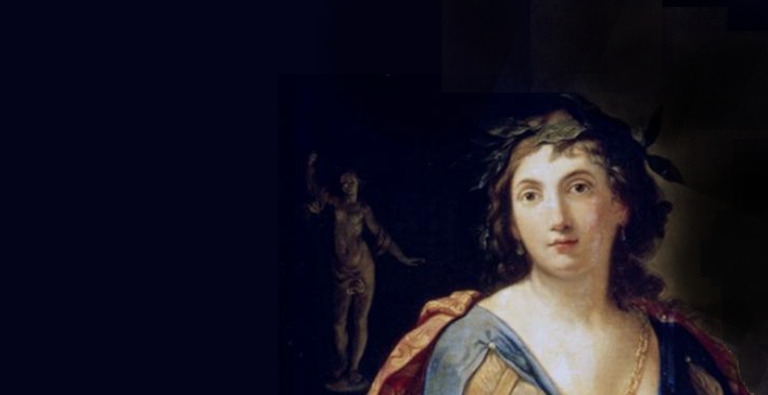
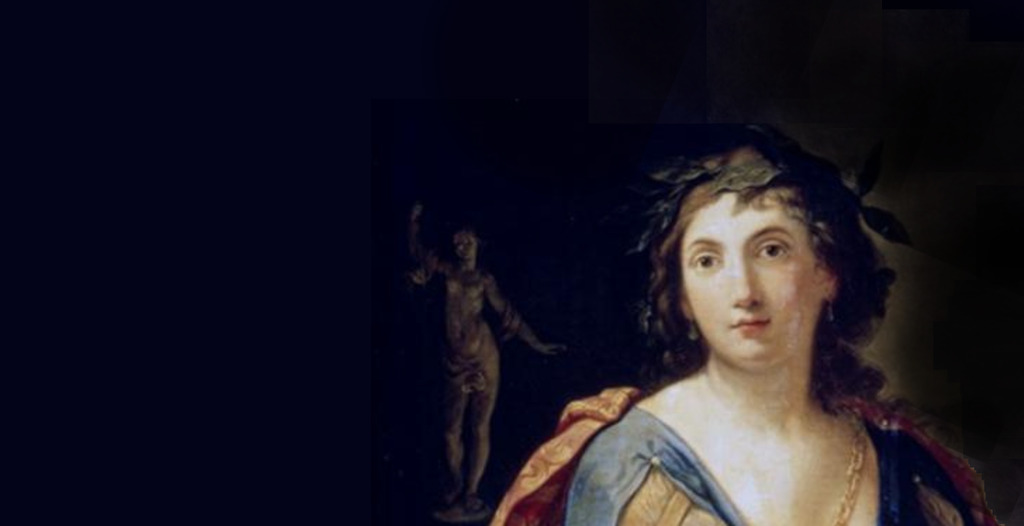
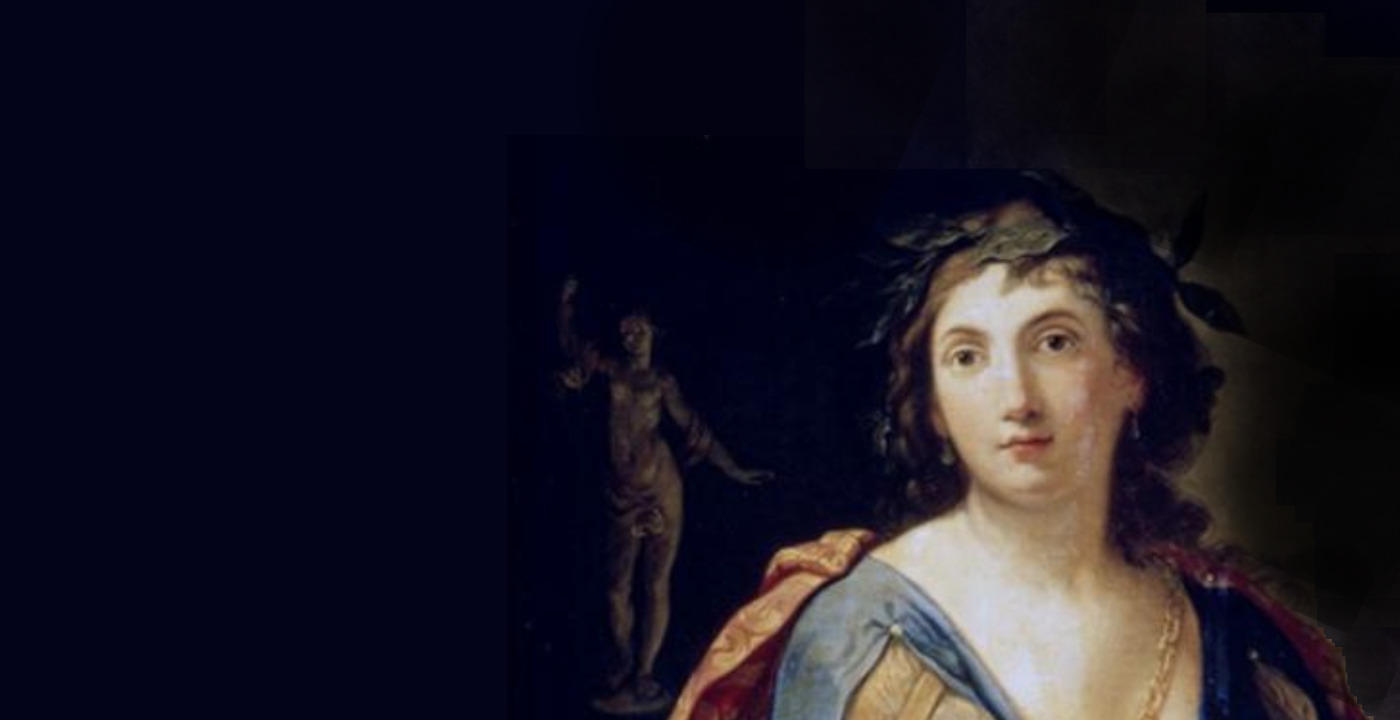
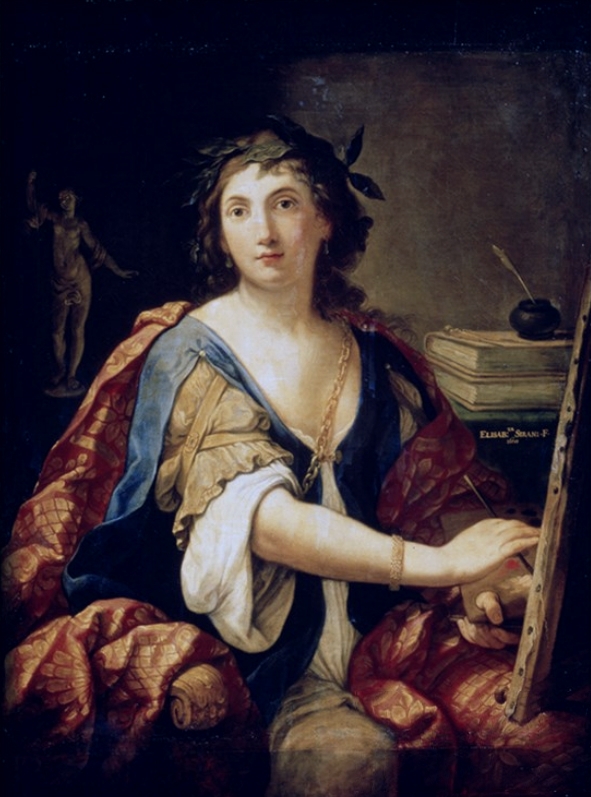
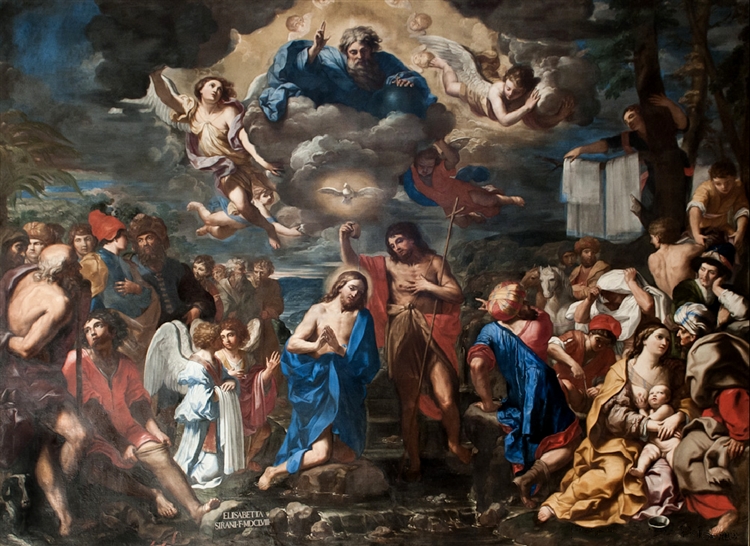
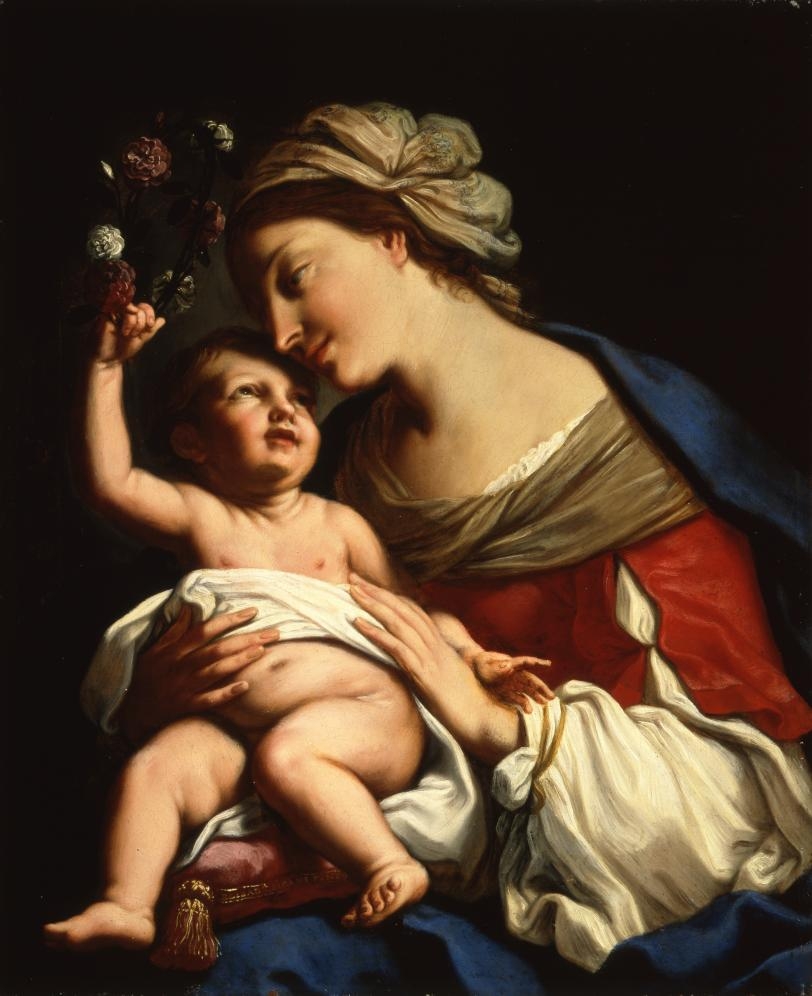
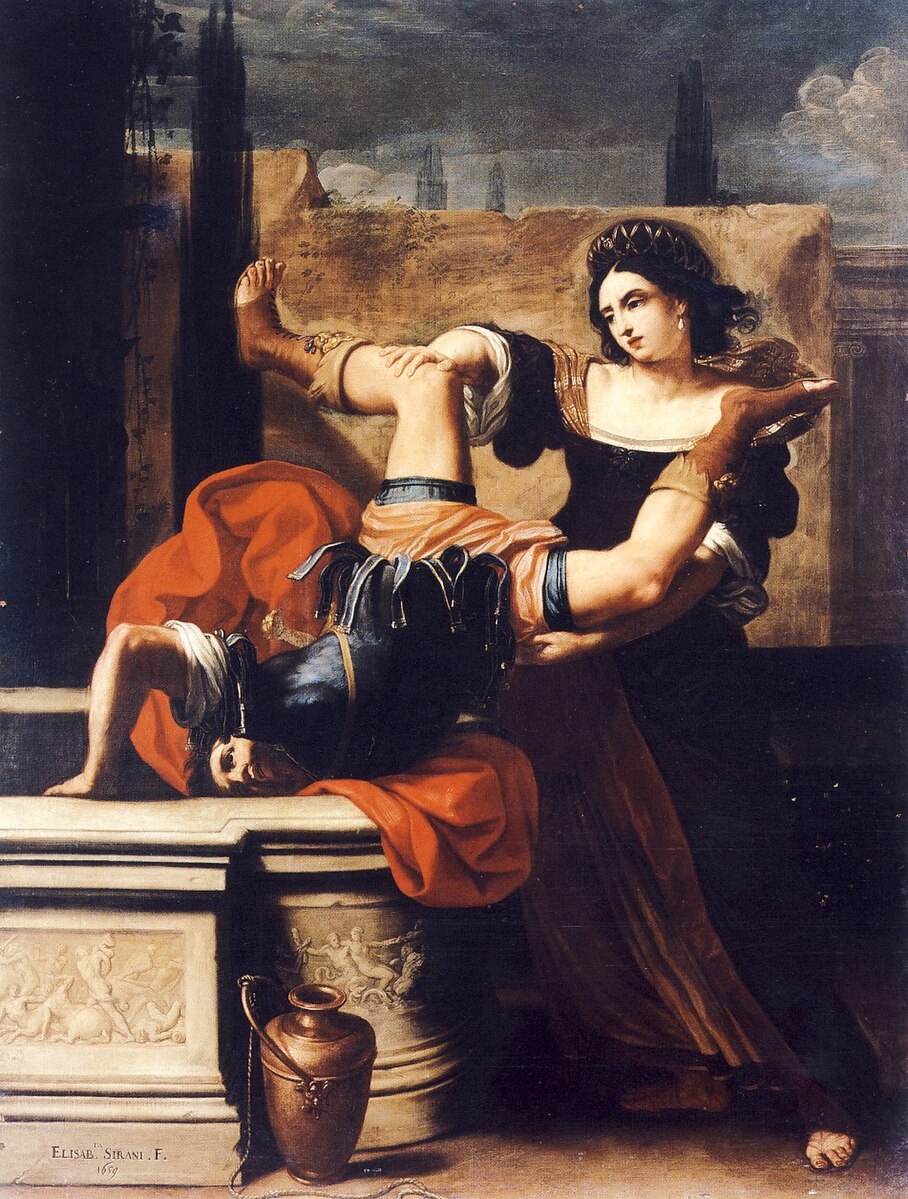
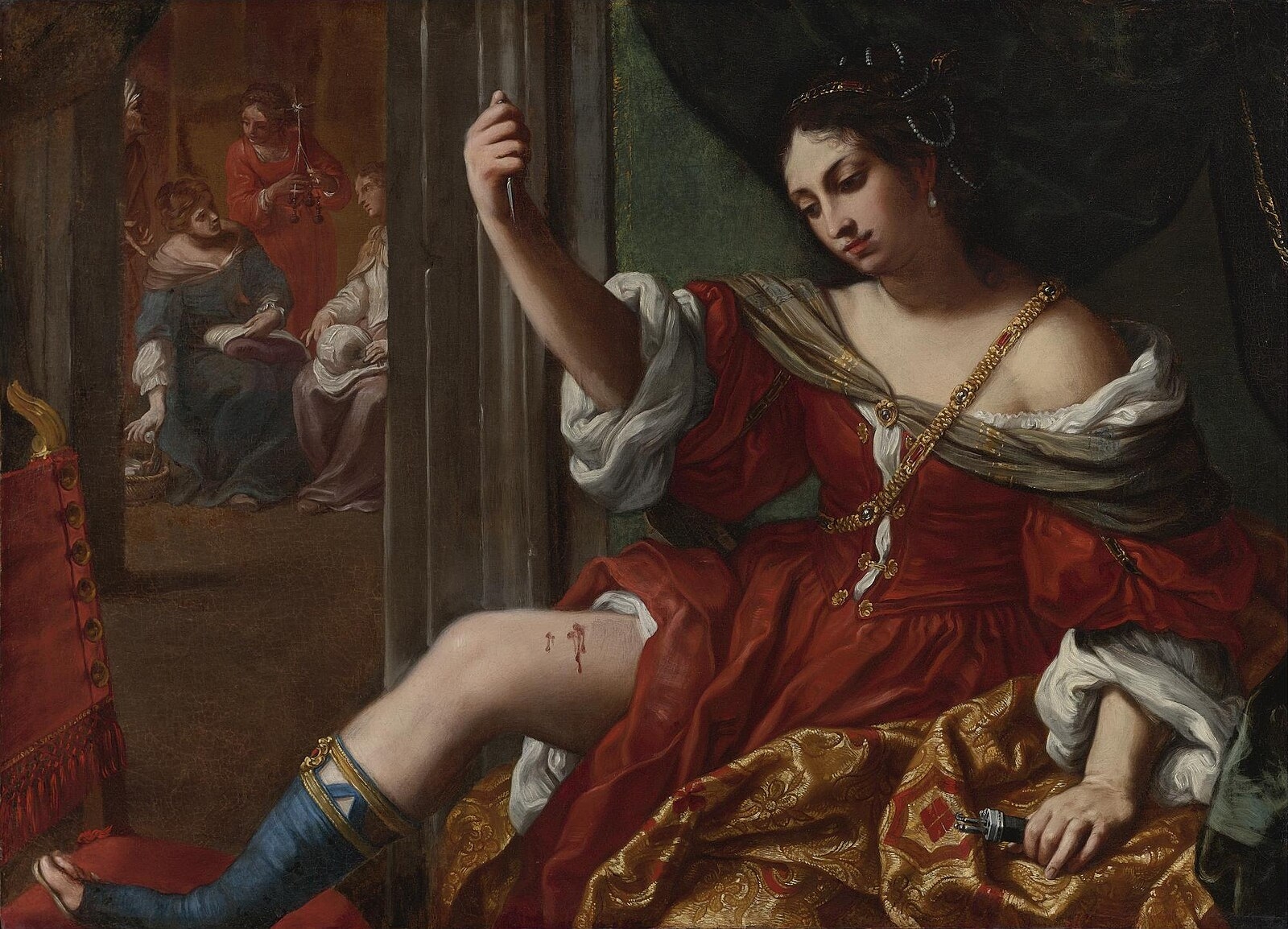
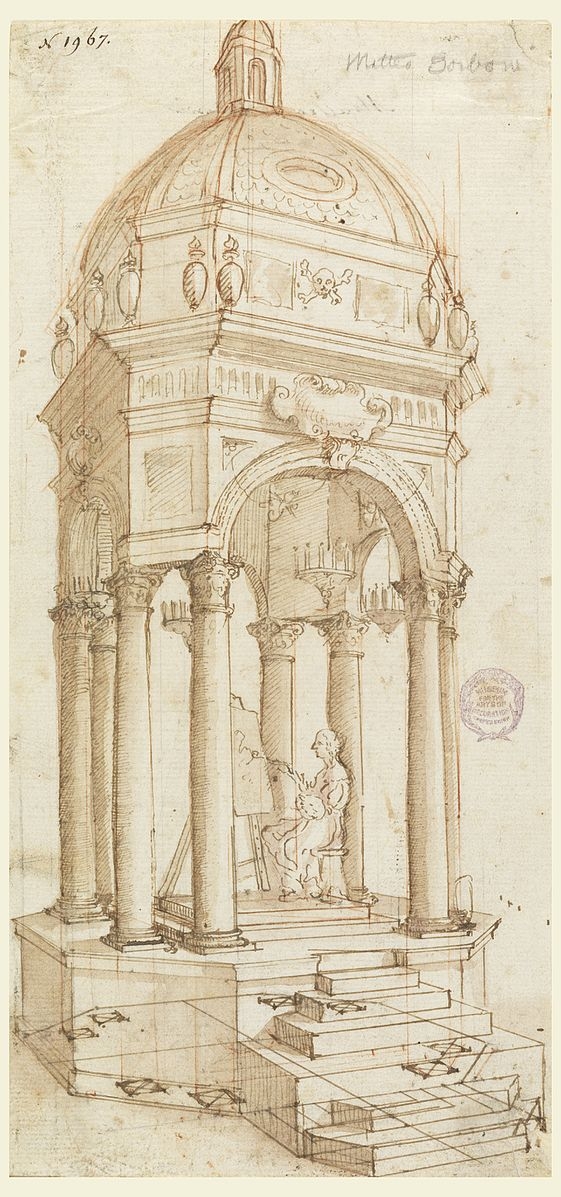
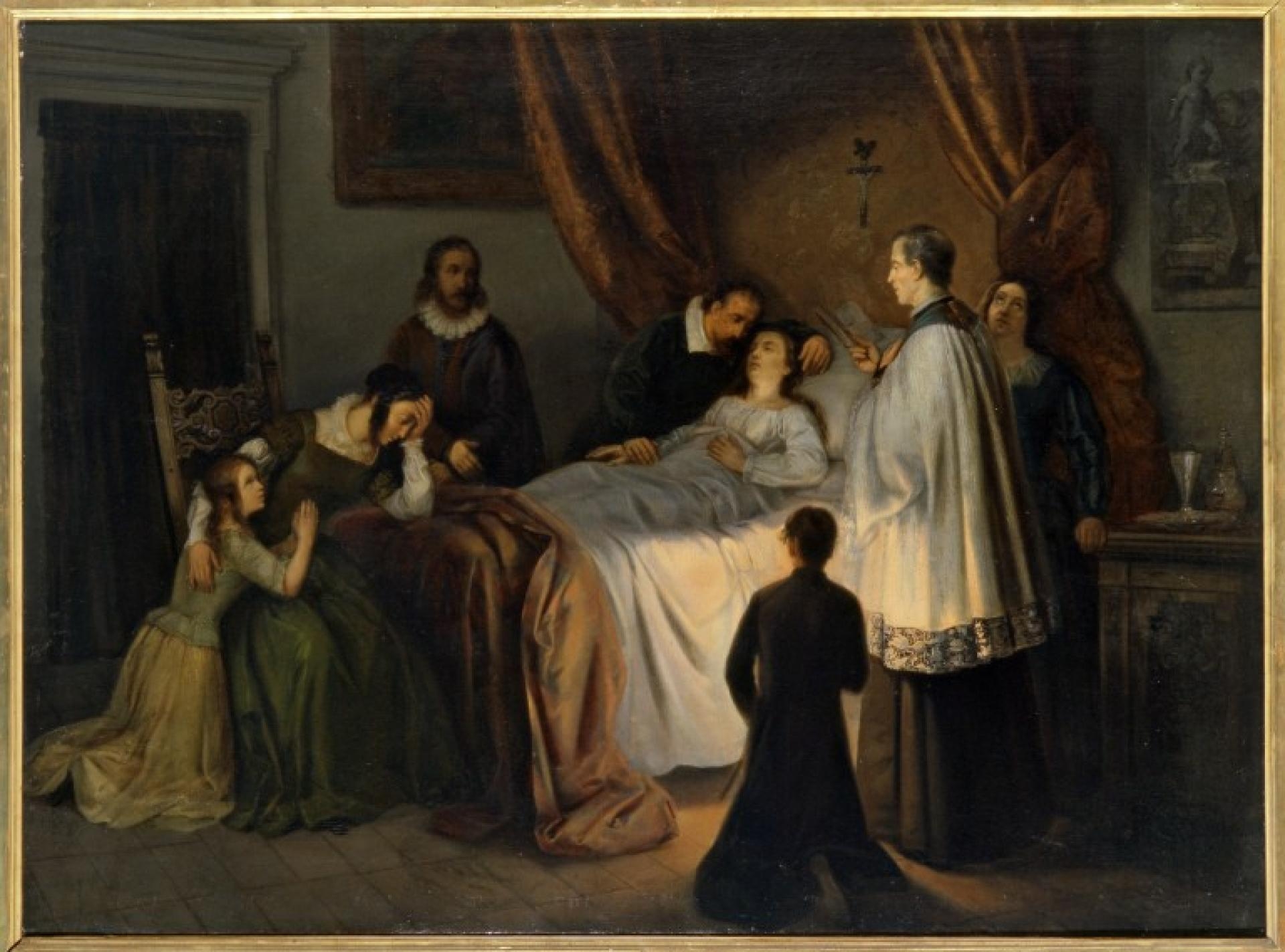
Comment
Your message was sent successfully